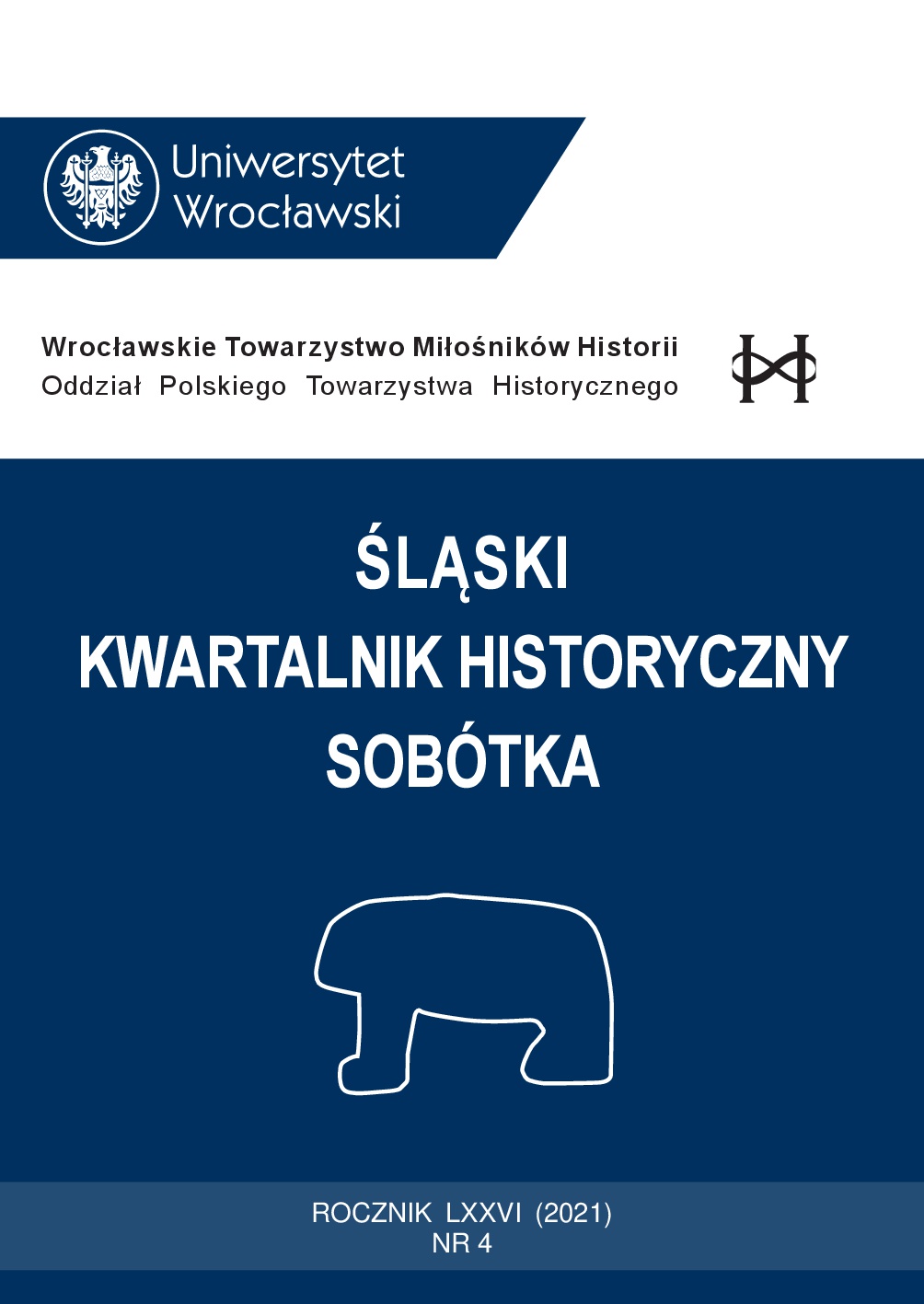Ślubowanie duchowieństwa w województwie wrocławskim na wierność Polskiej Rzeczpospolitej Ludowej i Jej Rządowi w kwietniu 1953 r. oczami aparatu represji
The pledge of allegiance to the Polish People's Republic and its government made in April 1953 by the clergy of Wrocław Voivodeship in the eyes of the apparatus of repression
Author(s): Robert KlementowskiSubject(s): History, Theology and Religion, Post-War period (1950 - 1989)
Published by: Wydawnictwo Uniwersytetu Wrocławskiego
Keywords: Catholic Church; security apparatus; the pledge of 1953; repressions; clergy
Summary/Abstract: Modern historiography on the Polish history after 1945 has reached the point when it can move from basic research utilizing the previously classified archives to generalizing reflections. It means that individual events and processes must be considered within a broader context – including the activities of the repressive state apparatus of the communist Poland against religious circles. The Decree of February 9, 1953 on appointments of clergy to church positions was a legal act crowning a broad array of actions aiming at subjugation of the Catholic Church to the communist authorities by forcing the clergy to makea pledge of allegiance to the state, and by gaining influence on filling church positions. This problem is presented through a reconstruction of the realization of the act of making the pledge – on the example of Lower Silesia and from the point of view of the political police. The pledge action was for the security apparatus not only another task within the scope of its responsibilities, but also an opportunity to build up its own position in the power structures of a totalitarian state. In the current study, lists of priests allowed and not allowed to make the pledge were reconstructed; the author describes the selection process of the clergy members, how did the involved priests react and – in the end – what meaning the whole operation had for the security apparatus. Each institution (here: the security apparatus and the Catholic Church) functions on many planes and the consequences of its activities can be divided into short- and long-term. Therefore, the subject of the analysis can be described either in the context of goals set and achieved at that time, or in light of the way in which the considered events are seen in a longer perspective, from the point of view of history and collective memory – for example, in the context of a stereotypical view that repressions against the Catholic Church were unusually harsh when compared to the whole society.
Journal: Śląski Kwartalnik Historyczny Sobótka
- Issue Year: 76/2021
- Issue No: 4
- Page Range: 35-93
- Page Count: 59
- Language: Polish

